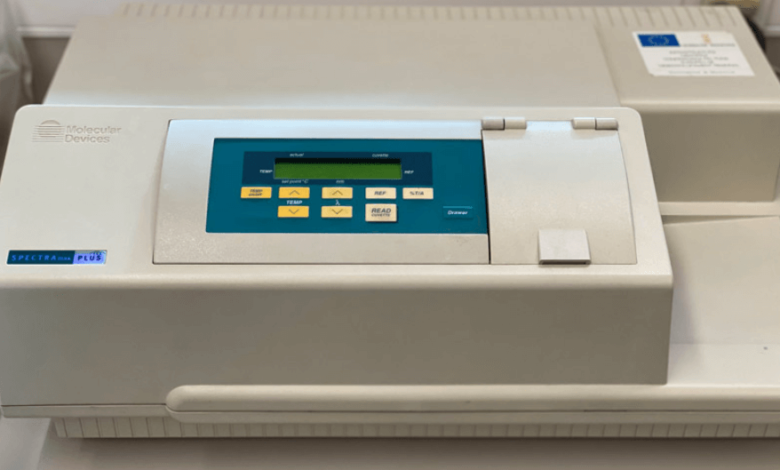UV Visible Spectrophotometer: Essential Analytical Tool Across Industries

In the realm of analytical instrumentation, few tools are as essential, versatile, and widely adopted as the UV visible spectrophotometer Known for its precision, simplicity, and broad application range, this instrument plays a critical role in research labs, quality control departments, pharmaceutical production, environmental testing, and beyond.
As industries push for more accurate, rapid, and affordable methods of quantitative analysis, the uv visible spectrophotometer has continued to evolve, adapting to both traditional and emerging scientific demands. This article explores what makes this instrument indispensable, how it works, where it’s used, and why it’s still a top choice for many laboratories worldwide.
What is a UV Visible Spectrophotometer?
A uv visible spectrophotometer is an optical instrument that measures the absorbance or transmittance of ultraviolet and visible light (typically in the wavelength range of 190 to 1100 nm) through a sample. It helps quantify how much light is absorbed by a substance at specific wavelengths, providing insights into concentration, purity, and reaction kinetics.
The core principle is based on Beer-Lambert’s Law, which states that the absorbance of light is directly proportional to the concentration of the absorbing species and the path length through which the light travels.
How Does a UV Visible Spectrophotometer Work?
A uv visible spectrophotometer works by passing a beam of light through a sample and detecting the amount of light absorbed.
Here’s a breakdown of the operation:
- Light Source: A deuterium lamp (for UV) and a tungsten lamp (for visible range) provide the initial light.
- Monochromator: This component selects a specific wavelength of light for analysis.
- Sample Holder: The light passes through a cuvette containing the sample solution.
- Detector: A photodiode or photomultiplier tube detects the amount of light that passes through the sample.
- Display/Software: The system calculates and displays absorbance, transmittance, or concentration based on calibration data.
The output spectrum allows researchers to determine various chemical and physical properties of the sample under study.
See also: Tela Filtro: The Unsung Hero in Filtration Technology
Key Features of a Modern UV Visible Spectrophotometer
Today’s uv visible spectrophotometer models are more advanced than ever. Key features include:
- Wide Wavelength Range: Covers both UV and visible spectrums (typically 190–1100 nm).
- High Resolution: Narrow bandwidths for accurate peak detection.
- Dual Beam Designs: For better stability and automatic background correction.
- User-Friendly Software: Real-time data acquisition, calibration curves, and compliance-ready reports.
- Portability Options: Compact, benchtop, and even portable models for field analysis.
Applications of the UV Visible Spectrophotometer
Thanks to its versatility, the uv visible spectrophotometer is used across a wide spectrum of scientific disciplines and industries.
🧪 Pharmaceutical Industry
- Drug Analysis: Determines concentration and purity of active pharmaceutical ingredients (APIs).
- Dissolution Testing: Monitors drug release over time in formulation testing.
- Quality Control: Identifies contaminants or degradation products in formulations.
🌱 Environmental Science
- Water Quality Testing: Measures parameters like nitrate, phosphate, and heavy metal presence in water.
- Air and Soil Monitoring: Analyzes pollutants or chemical residues in environmental samples.
🥫 Food and Beverage
- Color Analysis: Measures natural or artificial coloring in food and drinks.
- Additive Measurement: Determines concentration of preservatives or nutrients.
- Spoilage Detection: Identifies signs of oxidation or degradation.
🏥 Clinical and Biomedical Labs
- Enzyme Assays: Tracks enzyme kinetics and activity.
- Protein and DNA Quantification: Essential in molecular biology for purity checks.
- Blood Analysis: Assesses hemoglobin or bilirubin levels in clinical samples.
🧫 Academic and Research Use
- Used in chemistry, biochemistry, microbiology, and physics laboratories for foundational experiments and advanced studies.
Benefits of Using a UV Visible Spectrophotometer
There are several reasons why the uv visible spectrophotometer remains a cornerstone in scientific instrumentation:
✅ Non-Destructive Analysis
Most UV-Vis methods do not alter or destroy the sample, allowing for additional testing.
✅ Fast and Accurate
Analysis can often be completed in seconds with results that meet global standards for repeatability and precision.
✅ Easy Calibration
Calibration with standard solutions is straightforward, enhancing user confidence in accuracy.
✅ Low Sample Volume
Small cuvettes allow analysis with minimal sample material—ideal for rare or expensive substances.
✅ Cost-Effective
Compared to more complex instruments like HPLC or mass spectrometry, the uv visible spectrophotometer is affordable and easy to maintain.
Types of UV Visible Spectrophotometers
There are several models available, each suited to different lab requirements:
🔹 Single Beam
- Light passes through sample only.
- More affordable but less stable.
- Suitable for basic educational or field applications.
🔹 Dual Beam
- Compares sample light path with a reference path.
- More accurate, with better baseline stability.
- Preferred for QC labs and research applications.
🔹 Scanning Spectrophotometers
- Capable of scanning entire wavelength ranges to produce full absorbance spectra.
- Ideal for detecting unknown substances or method development.
Considerations When Choosing a UV Visible Spectrophotometer
Choosing the right uv visible spectrophotometer involves several considerations:
- Wavelength Accuracy: Higher precision instruments deliver more reliable results.
- Photometric Range: Ensures the instrument can detect both high and low concentration ranges.
- Software Features: Look for features like compliance modules, GLP/GMP support, or kinetic modeling tools.
- Cuvette Compatibility: Confirm the cuvette holder supports different sizes and materials (quartz, plastic, glass).
- After-Sales Support: Always work with manufacturers or suppliers that offer robust technical support and maintenance services.
Leading Brands in the Market
There are numerous reliable manufacturers of uv visible spectrophotometer instruments, including:
- Shimadzu
- Agilent Technologies
- PerkinElmer
- Thermo Fisher Scientific
- Drawell, a rapidly emerging global supplier known for offering high-quality instruments at competitive prices with excellent after-sales service.
Each brand brings unique features and pricing models, so selection depends on specific application needs, budget, and support requirements.
Maintenance Tips for Long-Term Performance
To ensure your uv visible spectrophotometer performs optimally for years, follow these maintenance tips:
- Clean Cuvettes Carefully: Avoid scratches or residue that can distort readings.
- Calibrate Regularly: Use certified standards to check wavelength and absorbance accuracy.
- Store Properly: When not in use, protect the system from dust, heat, and moisture.
- Update Software: Keep the system’s software up to date for better performance and compatibility.
- Schedule Annual Servicing: Have professionals inspect and maintain the lamp, detector, and optics.
Final Thoughts
The uv visible spectrophotometer remains one of the most valuable instruments in scientific analysis due to its unmatched versatility, simplicity, and efficiency. From quantifying tiny molecules in pharmaceutical labs to measuring pollutants in drinking water, its applications are far-reaching and continuously expanding.
As analytical demands grow, modern UV-Vis systems now offer better sensitivity, automation, and connectivity. Whether you’re building a new lab or upgrading your equipment, investing in a high-quality uv visible spectrophotometer can bring long-term benefits to your operations.




